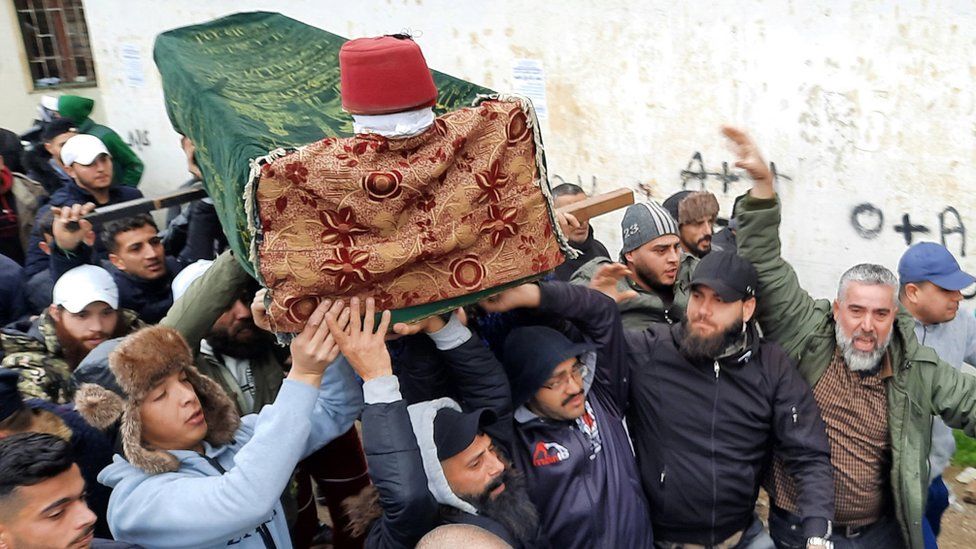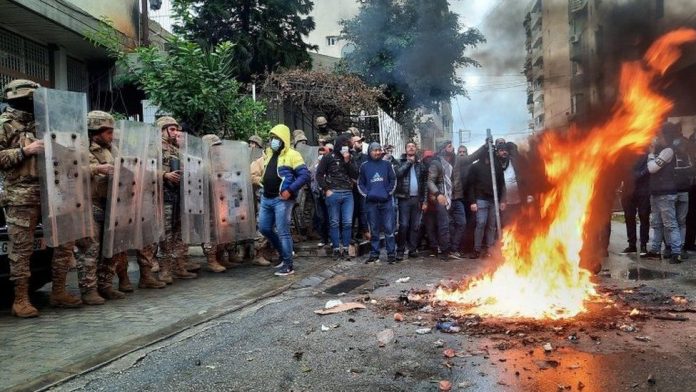More than 100 people were injured in Thursday’s clashes between demonstrators and security forces, the Lebanese Red Cross said.
Earlier in the day, crowds marched at a funeral of protester Omar Tayba who eyewitnesses say was hit by a bullet. The total curfew was imposed this month to halt a surge in Covid cases.
People are forbidden from leaving their homes unless they are essential workers, and they must rely on deliveries from supermarkets for food.
Many have also been left without an income in a country where a third of the workforce is unemployed and a large proportion relies on the informal sector. The government is providing some financial assistance to 230,000 families, but half the country’s population of nearly seven million is estimated to be living under the poverty line and almost a quarter is in extreme poverty.

The round-the-clock lockdown began on 14 January and was recently extended until 8 February.
The government had hoped the drastic action would prevent the fragile healthcare system being overwhelmed. However, hospitals are now reporting that their intensive care units are running at 94% capacity. Essential equipment and medicines are also in short supply.
Nearly 300,000 people have tested positive for Covid-19 and 2,600 have died in Lebanon since the start of the pandemic, according to data compiled by America’s Johns Hopkins University.
But 116,000 of those infections and 1,144 of the deaths have been reported in the past month.
Lebanese health officials blame the surge on the government’s decision to relax restrictions ahead of Christmas and New Year, with bars and nightclubs allowed to open for the first time in months.
The pandemic has compounded Lebanon’s economic crisis, which saw a projected 19% decline in GDP in 2020, triple digit inflation, and mass business failures and job losses.
The huge explosion at the port of Beirut in August, which killed more than 200 people, is also estimated to have caused up to $4.6bn (£3.4bn) of damage to buildings and infrastructure.
Lebanon’s finances and public services have also been strained by the influx of 860,000 refugees from neighboring Syria. They now account for a quarter of its population.

















